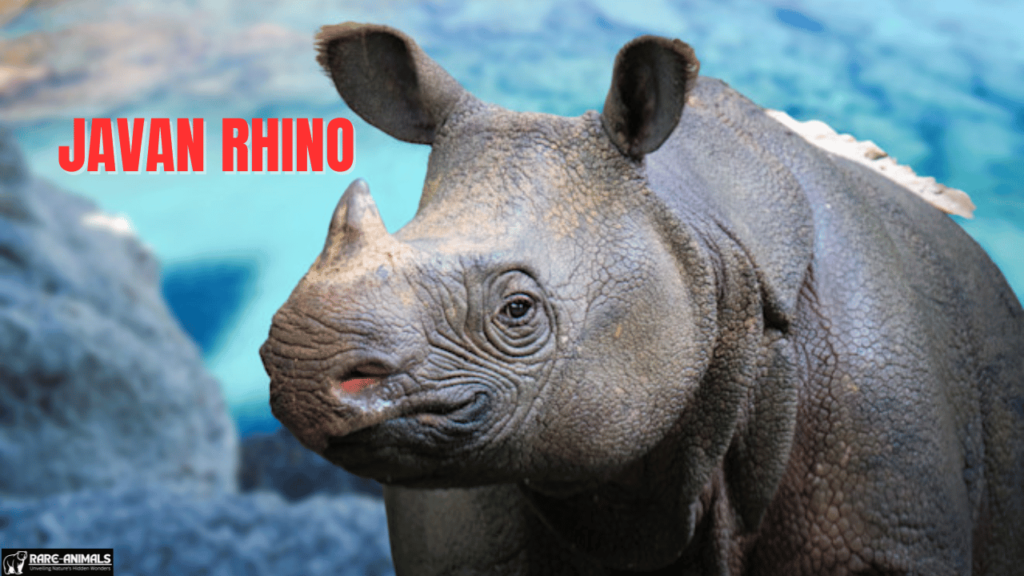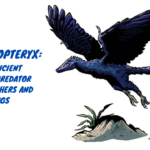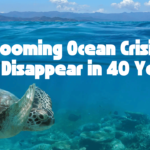The Javan rhino (Rhinoceros sondaicus), Earth’s rarest rhinoceros species, is on the brink of extinction. With fewer than 80 individuals surviving in the wild, conservation efforts have never been more critical.
This elusive creature, native to Southeast Asia, faces habitat loss and poaching, making its survival a top priority for conservationists worldwide.
Habitat and Distribution
Where Do Javan Rhinos Live?
The Javan rhino is currently found only in Ujung Kulon National Park in Indonesia. Historically, its range extended across Southeast Asia, including Thailand, Vietnam, and Myanmar.
Preferred Environment
- Tropical rainforests with abundant water sources
- Dense lowland vegetation for cover
- Remote, undisturbed habitats
Physical Characteristics and Behavior
Unique Features
Javan rhinos are distinguishable by their:
- Single horn, unlike their African counterparts with two
- Gray, armor-like skin with loose folds
- Average height of 1.5 to 1.7 meters at the shoulder
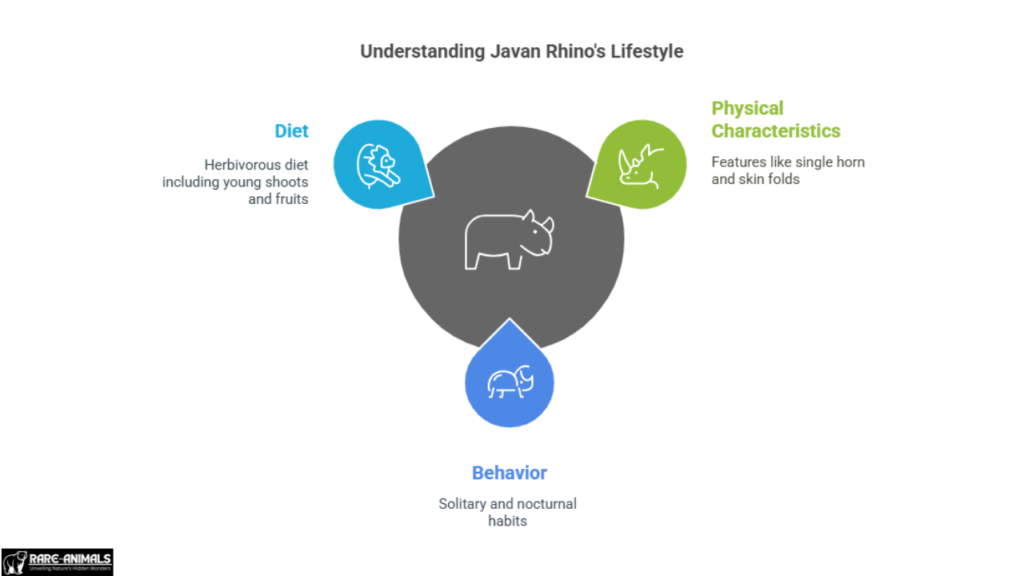
Behavior and Lifestyle
- Solitary animals, with minimal social interactions
- Nocturnal and crepuscular, most active during dawn and dusk
- Wallows in mud to regulate body temperature and avoid parasites
Diet and Feeding Habits
Javan rhinos are herbivores, primarily feeding on:
- Young shoots, twigs, and leaves
- Fruits, such as figs and other tropical varieties
- Aquatic plants found near water sources
Conservation Status and Threats
Why Are Javan Rhinos Endangered?
Several factors contribute to their critically endangered status:
- Habitat destruction due to agricultural expansion and deforestation
- Poaching for their horns, despite international bans
- Limited genetic diversity, increasing susceptibility to diseases
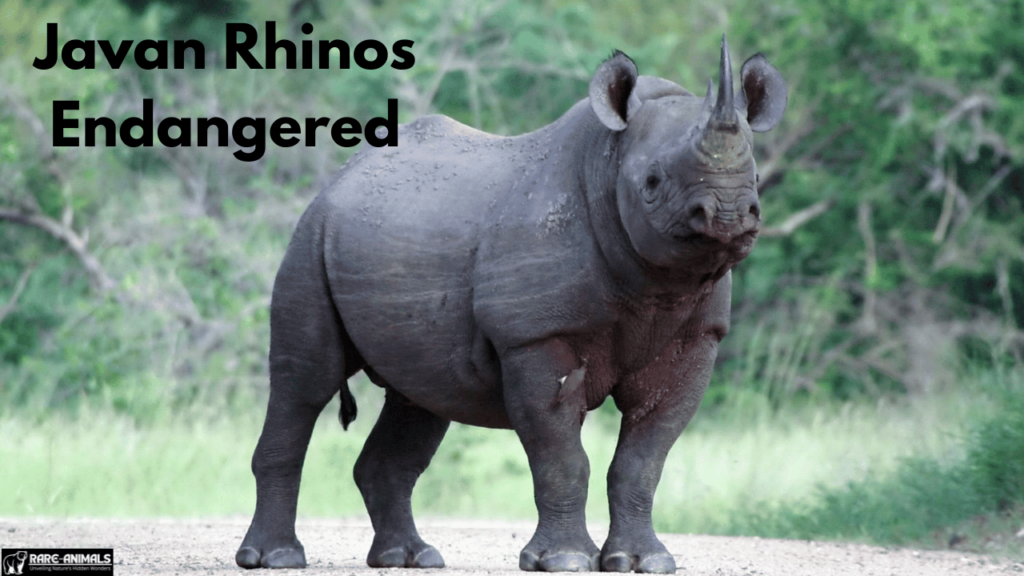
Conservation Efforts
Conservation organizations are working to protect Javan rhinos through:
- Establishing protected areas and anti-poaching patrols
- Monitoring populations via camera traps and field surveys
- Raising awareness and involving local communities
The Role of Local Communities in Conservation
Involving local communities in conservation efforts is essential for Javan rhino survival. Effective strategies include:
- Eco-tourism initiatives to provide sustainable income
- Educational programs to promote awareness
- Habitat restoration projects led by local groups
Future Prospects and Challenges
Despite ongoing conservation efforts, challenges persist:
- Increasing pressure from human encroachment
- Need for genetic diversity to ensure population resilience
- Climate change impacting habitat conditions
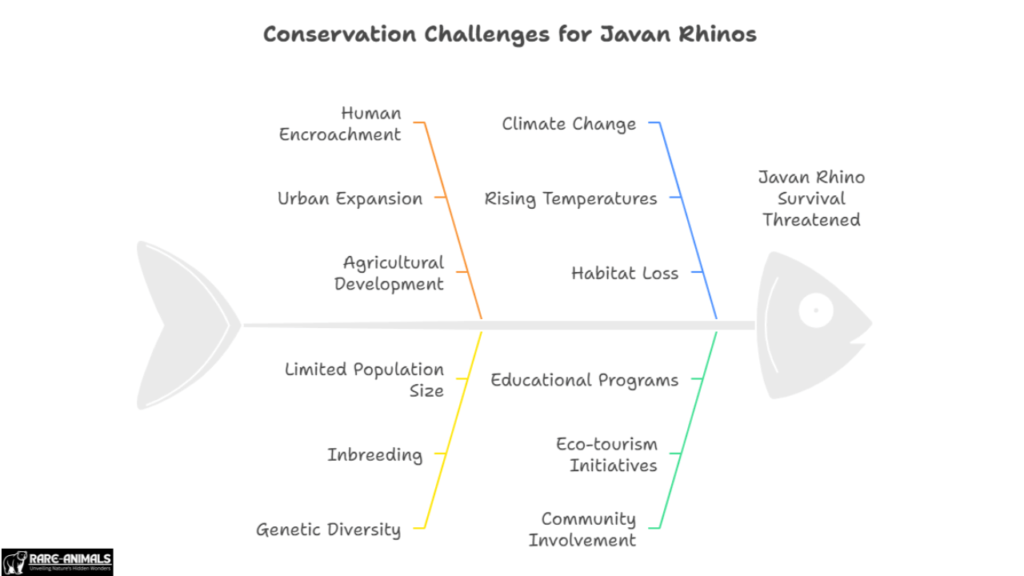
Conclusion
The Javan rhino remains one of the most endangered species on the planet. With dedicated conservation efforts, global awareness, and local engagement, there is still hope for its survival.
Supporting organizations and spreading awareness are crucial steps we can all take to protect this magnificent species.
FAQs
How many Javan rhinos are left in the wild?
Fewer than 80 individuals remain, all located in Ujung Kulon National Park.
Can Javan rhinos be found in captivity?
No, all known Javan rhinos live in the wild; none exist in captivity.
What do Javan rhinos eat?
They primarily consume leaves, shoots, fruits, and aquatic plants.
They primarily consume leaves, shoots, fruits, and aquatic plants.
You can support conservation efforts by donating to wildlife organizations and spreading awareness about their plight.
Why is genetic diversity important for Javan rhinos?
Limited genetic diversity can lead to health issues and reduced adaptability to environmental changes.

Alveena is an experienced content writer with a knack for crafting engaging and insightful pieces. She thrives on breaking down complex ideas and presenting them as clear, captivating content that resonates with readers.

